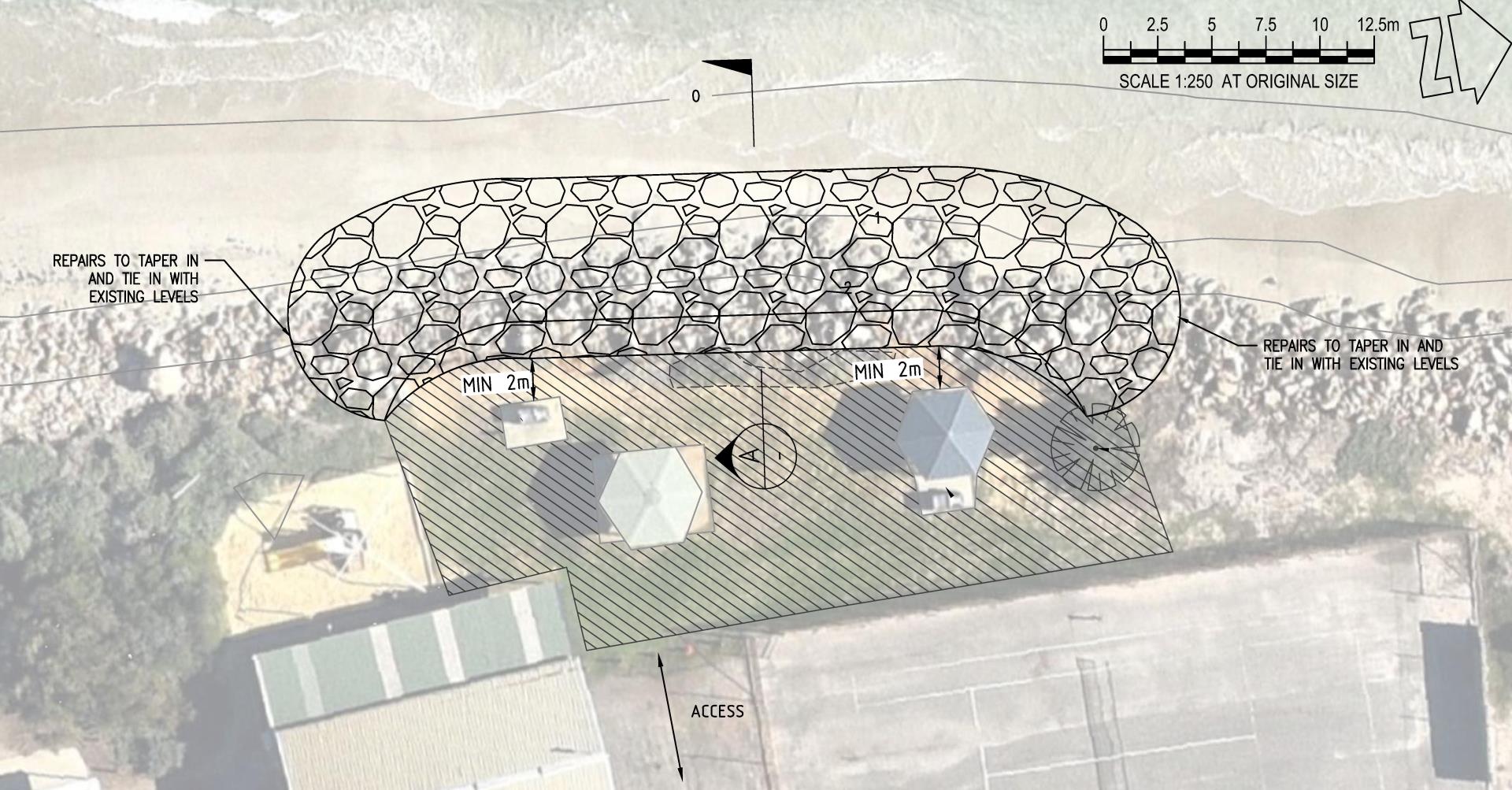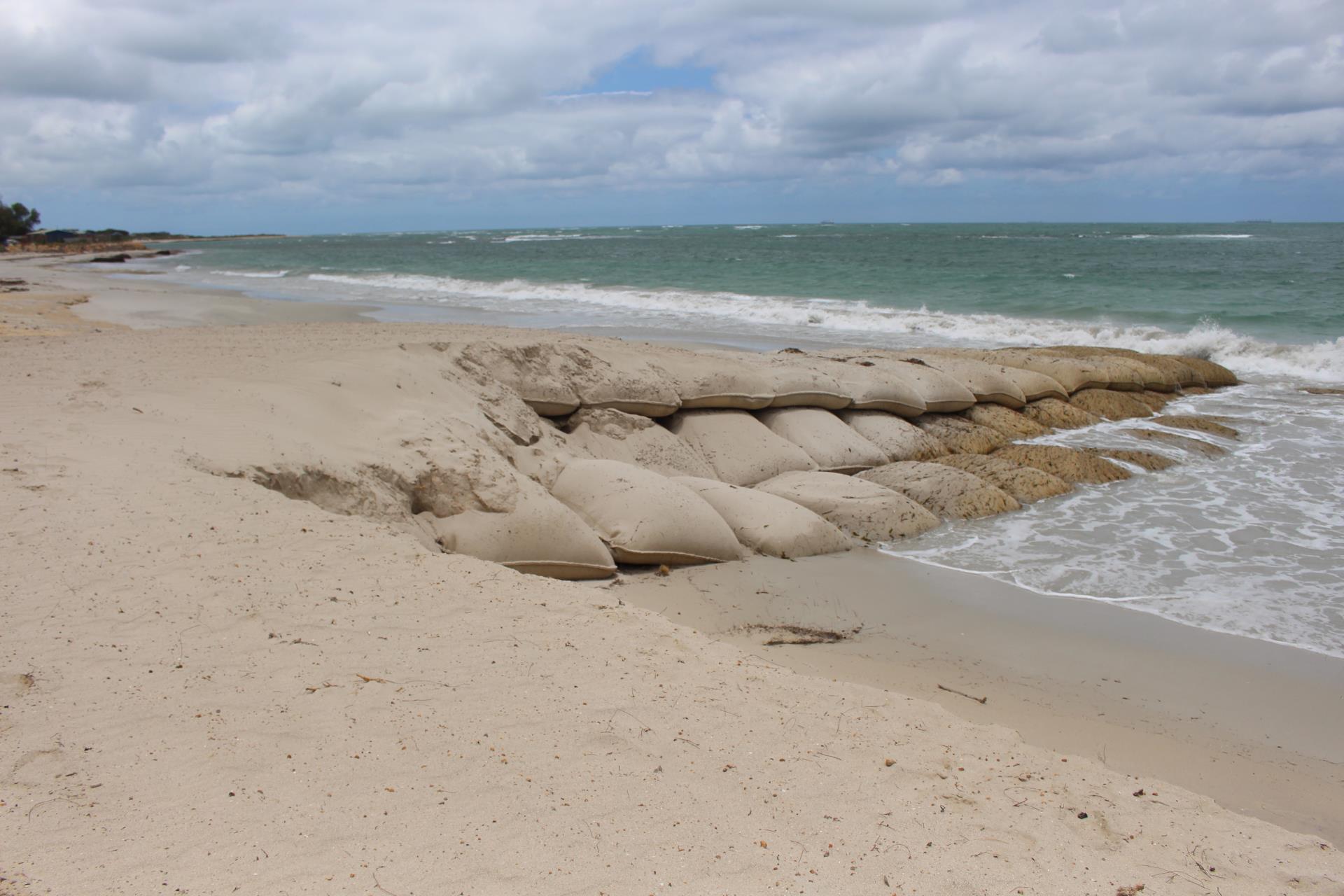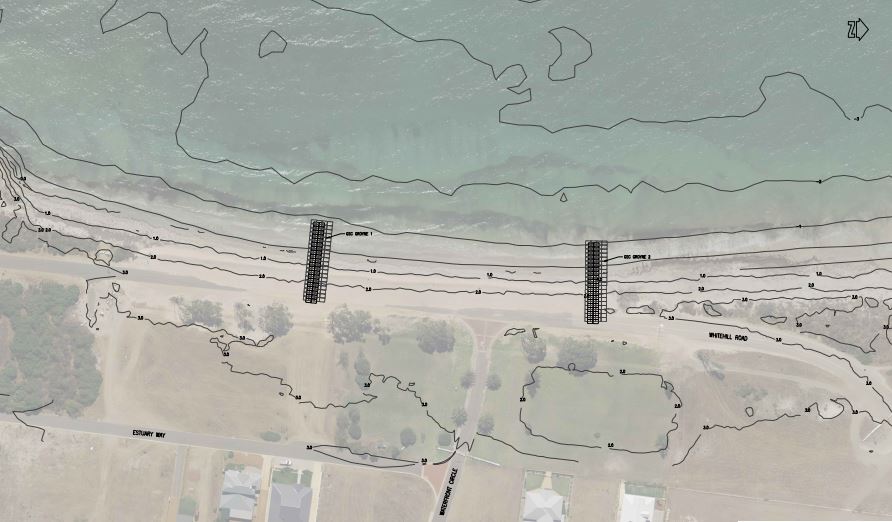Whitehill Road Coastal Adaptation Works
In April 2016, high tides and strong swells undermined the Whitehill Road foreshore in Drummond Cove forcing the permanent closure of Whitehill Road between John Batten Community hall and Drummond Cove Road.
In response to community concerns regarding on-going coastal erosion of the Drummond Cove Foreshore a community workshop was held in May 2016 in which the community determined their preferred short term solution to the erosion, sand nourishment of the site, would be undertake
Council adopted the Geraldton CHRMAP Report at the 27 November 2018 Ordinary Meeting of Council. The report is being used to inform decisions regarding the development of coastal policies and emerging coastal works.
2021 Coastal Works
In August 2021, a seawall is being constructed in front of the John Batten Community Hall to replace the temporary rock embankment installed in 2010 to protect the facility from erosion caused by winter storms.
The works are being funded by the State Government with the money remaining from the $600,000 the City received to construct a third Geotextile Sand Container groyne at Whitehill Road. See project details below.
This project was completed under budget and with the remaining funds the City is replace the existing protection with a more resilient revetment that will ensure the continued use of this popular community facility.
Local contractor Red Dust Holdings are undertaking the works, which are expected to be completed in September 2021.
IMAGE: Seawall Design

In July 2021, construction of a third, Geotextile Sand Container (GSC) groyne on the Drummond Cove Foreshore to expand ongoing coastal mitigation works at Whitehill Road was completed.
The 37m long GSC groyne, which extends across the beach and into the ocean, is designed to retain sand at Whitehill Road and reduce reliance on temporary sand nourishment operations.
The first two GSC groynes built on site in 2018 are performing well with sand banking up so effectively on the south side of the low crest groynes and along the beach that the groynes are nearly completely buried.
Construction of the groynes was undertaken by local contractor Red Dust Holdings with MP Rogers and Associates providing technical services.
The project was 100% funded by the WA Recovery Plan.
IMAGE: Groyne Design

2018 Coastal Works
In July 2018, Council made the decision to construct two low-crest 40m long Geotextile Sand Container (GSC) groynes on the Drummond Cove Foreshore to mitigate coastal erosion at Whitehill Road. More here
PHOTO: One of two groynes at Whitehill Road in Drummond Cove.

These groynes, which extend across the beach and into the ocean, have been designed to retain sand at Whitehill Road and reduce reliance on temporary sand nourishment operations.
Construction of the groynes was undertaken by local contractor Red Dust Holdings with MP Rogers and Associates providing technical services and completed in December 2018. More here
The $250,000 project was funded via the City’s Coastal Adaptation Measures budget.
IMAGE: Groynes Design
